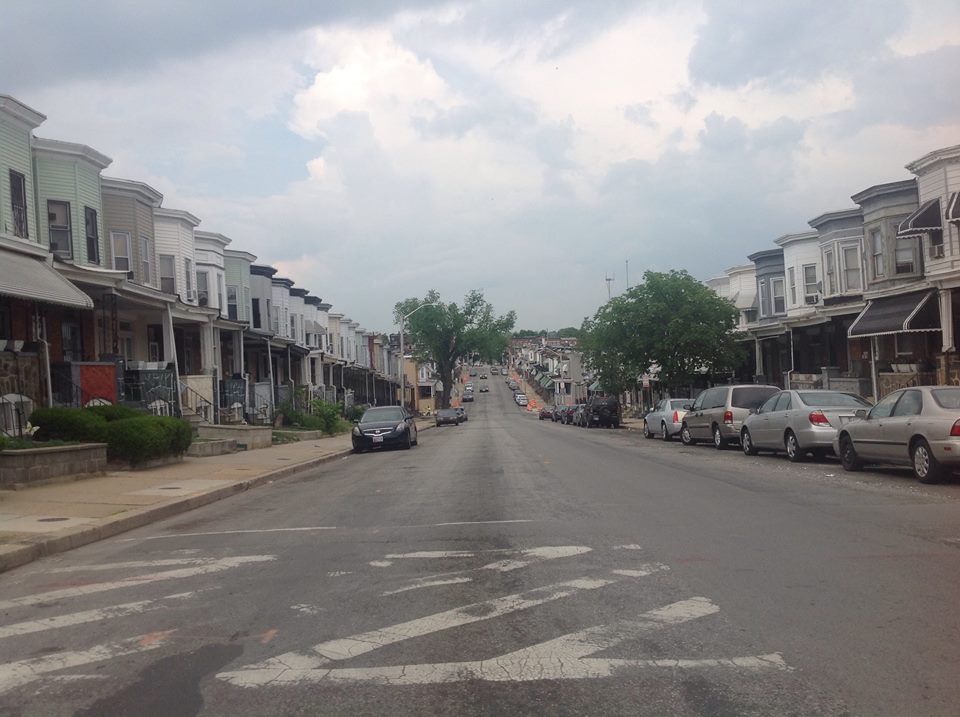I heard people. And I heard that Sandtown is a beautiful, beautiful community.
I heard that people are born and raised there and, if they leave, they often return.
I heard people want to give back.
I heard a man, 13 days sober cold turkey off of heroin and a drug I’ve never heard of, say he spent 26 years in prison and now, at 45, wants to get his diploma and go to college. The system says he is unemployable.
I heard a friend of Freddie Gray’s say, “He was a quiet man, never was getting into fights or anything like that. He was quiet.”
I heard people tell me the riots were an embarrassment and that the events of those days were pinned on kids but sparked by the police.
I heard people say the divide comes down to race.
I heard people say it has nothing to do with race.
I heard there needs to be better communication between folks. Between the nonprofits and churches, between organizations and the people they’re serving, between community members.
I heard that people want to be heard.
I heard that people are wounded.
I heard people in pain.
This happened when I went to Sandtown:
Someone was shot every day we were there. Sometimes more than one person. Sometimes they died. Sometimes we inadvertently drove up on the police scene. Sometimes we didn’t know until we got home for the night and read the news.
Because Sandtown is a home, a community and (most of the time), Sandtown felt safe to us. We walked up and down some of the streets. People said hello, some looked dubious, most ignored us.
We felt tension once, near the projects where Freddie Gray began running from the police, which by the way, it’s not uncommon for young black men to run from the police.
A white person might think, “You never RUN from the cpps!” or, “If they’re running, they must’ve been doing something wrong.”
But here, in Sandtown, if you’re a young black man, you run. You’re running from becoming a statistic – the one that denotes victims of police brutality.
We were at a traffic light near the projects. Our passenger window was down. A young man walked directly to the open window. I looked at him and said, “Hello.” When he was just close enough that we thought he was going to reach inside, he cut his path and walked in front of our car.
He looked hard into the driver’s window as he walked past and continued on his way.
The light turned green.
This happened when I went to Sandtown:
I became angry.
For three days I heard the same stories over and over and over again.
What are the challenges in Sandtown? I would ask.
Unemployment and a system that doesn’t support employment
Substandard housing
Lack of resources in schools
Absence of nutritious food
Safety
Drugs
Incarceration rates
Insufficient transportation
And then, until 2 a.m. for three days, I heard the stories over and over and over again as I processed video, audio, photos, trying to figure out the best way to relay the stories to you.
Forty-eight hours in, I was mad.
There was a Mad Men finale everyone was talking about on social media.
I was mad that half the children in the neighborhood we’d spent the day in live below the poverty line.
I was mad that I saw an elementary school, but at first mistook it for a prison.
I was mad that selling drugs is one of the few sources of income that provides for families.
I was mad that power is being abused.
People are angry.
If you can’t figure out why, walk some steps on their path. If you’re white, that’s about as close as you can get. You’ll never fit in their shoes.
But you can walk beside them. You can hear them.

“I was mad that I saw an elementary school, but at first mistook it for a prison.”
Wow! this line shocked me, and then made me mad too.